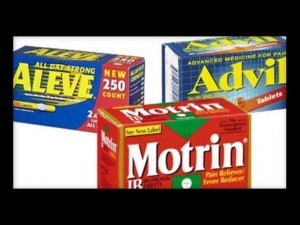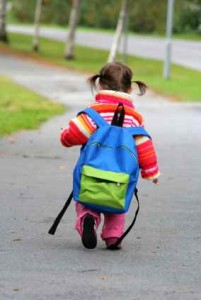
NSAID’s more harm then good
When our athletes/patients in Olathe and Overland Park suffer an injury they often hear us saying to avoid NSAID usage whenever possible. They are often surprised to find out that something they commonly use as an over the counter pain killer and antiinflammatory could be so damaging to their bodies and also be delaying their healing. Conservative estimates on the number of deaths in the USA per year from prescription use of NSAIDS for arthritis has been widely published at 16,500 or about 45 people per day. If these estimates included over the counter usage for all conditions and not just prescription arthritic usage these numbers would be significantly higher. If this is not enough alone to change your pill popping ways then I suggest you read this.
NSAIDs: Why We Do Not Recommend Them
The following statement comes from a well-known sports medicine book that has gone through five printings. “In spite of the widespread use of NSAIDs there is no convincing evidence as to
their effectiveness in the treatment of acute soft tissue injuries.” (Bruckner, P. Clinical Sports Medicine. New York City, NY: McGraw-Hill Book Company, 1995, pp. 105-109.)
This is a true statement, but definitely not strong enough. More appropriate would be something like, –In spite of the widespread use of NSAIDs there is substantial evidence that they hamper soft tissue healing.–
NSAIDs have been shown to delay and hamper the healing in all the soft tissues, including muscles, ligaments, tendons, and cartilage. Anti-inflammatories can delay healing and delay it significantly, even in muscles with their tremendous blood supply. In one study on muscle strains, Piroxicam essentially wiped out the entire inflammatory proliferative phase of healing (days 0-4). At day two there were essentially no macrophages (cells that clean up the area) in the area and by day four after the muscle strain, there was very little muscle regeneration compared to the normal healing process. The muscle strength at this time was only about 40 percent of normal.(Greene, J. Cost-conscious prescribing of nonsteroidal anti-inflammatory drugs for adults with arthritis. Archives of Internal Medicine. 1992; 152:1995-2002.)
The authors concluded that NSAIDs might delay muscle regeneration, when their study did in fact show delayed muscle healing. But you know politics…
Another study confirmed the above by showing that at day 28 after injury the muscle regenerative process was still delayed. The muscles of the group treated with Flurbiprofen (NSAID) were significantly weaker. The muscle fibers were shown under the microscope to have incomplete healing because of the medication. (Almekinders, L. An in vitro investigation into the effects of repetitive motion and nonsteroidal anti-inflammatory medication on human tendon fibroblasts. American Journal of Sports Medicine. 1995; 23:119-123.)
The key question regarding the healing of sports injury is, “What exactly does any therapy do to the fibroblastic cells that actually grow the ligament and tendon tissue?” Treatments that stimulate fibroblast proliferation will cause ligament and tendon repair and will help the athlete heal. Therapies that kill or hamper fibroblastic growth will be detrimental to the athlete.
In 1993 at the University of North Carolina School of Medicine, Division of Orthopaedic Surgery, Sports Medicine section, Dr. Louis Almekinders and associates studied human tendon fibroblasts to determine the effect of exercise and the NSAID Indomethacin on fibroblasts. Group I was the control in which no treatment was done; Group II-the tendons were exercised; Group III-the tendons were exercised and anti-inflamed with Indomethacin; and Group IV the tendons were just anti-inflamed with the Indomethacin. All the tendons underwent injury through repetitive motion, similar to what would happen to an athlete in training. Seventy-two hours after the injury, it was noted that compared to controls the only group that showed increased levels of prostaglandins was the exercised group. The group that was exercised and received the NSAID, as well as the NSAID group, had statistically significant lower levels of prostaglandins (specifically Prostaglandin E2) in the tendons. This showed that the NSAID blocked the inflammatory healing of even the tendon injuries that were exercised or rehabilitated. The tendonitis that was treated with just the NSAID had almost no prostaglandins in the sample, signaling a complete inhibition of the inflammatory healing process. The effect was even more pronounced at 108 hours.
The researchers also measured DNA synthesis in the fibroblasts. This showed which fibroblasts were proliferating. Again, the exercised group was the only group that exhibited elevated levels of DNA synthesis in the fibroblasts. Compared to the control group there was 100 percent more growth of fibroblasts in the exercise group. The tendons treated with Indomethacin had no DNA synthesis noted.
This showed there was no fibroblastic growth occurring. The group that exercised and took the NSAID showed a little bit of growth. The authors concluded, “Motion and prostaglandin release in Group II were associated with increased DNA synthesis. Inhibition of prostaglandin by Indomethacin also coincided with a decrease in DNA synthesis… Inhibition of prostaglandin synthesis, and thereby DNA synthesis, may not be desirable during the proliferative stage of a soft tissue injury, when DNA synthesis for cell division of fibroblasts is needed to heal the injury to the tendon.” The paper also stated a fact that many researchers in this field are wondering, “Despite the lack of scientific data, NSAIDs are widely used, often as the mainstay of treatment.” (Almekinders, L. An in vitro investigation into the effects of repetitive motion and nonsteroidal anti-inflammatory medication on human tendon fibroblasts. American Journal of Sports Medicine. 1995; 23:119-123.)
Another study was done on the use of perhaps the most popular anti-inflammatory medication used in sports medicine, ibuprofen, in the treatment of tendon injuries. It was found that the only thing the ibuprofen doses caused, was the strength of the flexor tendons to decrease. A decrease in strength of the flexor tendons of 300 percent was observed at four weeks. The peak force of the flexor tendons of controls was 12.0 newtons, whereas in the Indomethacin group it was an average of 2.5 newtons. Extensor tendon analysis showed similar results, with controls having a breaking strength of 12.0 newtons and the tendons treated with the NSAID, 3.5 newtons. The authors noted, “Examination of the data reveals a marked decrease in the breaking strength of tendons at four and six weeks in the ibuprofen-treated animals….This difference was statistically significant.” (Kulick, M. Oral ibuprofen: evaluation of its effect on peritendinous adhesions and the breaking strength of a tenorrhaphy. The Journal of Hand Surgery. 1986; 11A:100-119.)
From the above studies, it is clear that NSAIDs inhibit the fibroblastic growth process and thus diminish an athlete’s chance of healing. NSAIDs are used because they decrease pain, but they do so at the expense of hurting the healing of the injured soft tissue. A good example of this is a study on the use of Piroxicam (NSAID) in the treatment of acute ankle sprains in the Australian military.
Compared with the placebo group, the subjects treated with Piroxicam had less pain, were able to resume training more rapidly, were treated at lower cost, and were found to have increased exercise endurance on resumption of activity. The conclusion of the study was that NSAIDs should form an integral part in the treatment of acute ankle sprains. (Slatyer, M. A randomized controlled trial of Piroxicam in the management of acute ankle sprain in Australian regular army recruits. American Journal of Sports Medicine. 1997; 25:544-553.) At first glance in reviewing this study, NSAIDs appear to be great, but the real question is did they help the ligament injury heal?
In reviewing the study, the answer is a resounding NO! To test ligament healing the ankles were tested via the anterior drawer test. During this test the ankle was moved forward to determine the laxity in the ligaments. This study was published in 1997, and the author stated that this was the first time the clinical measurement of the anterior drawer sign had been used in a clinical trial. It meant that all the studies done prior to this one, in assessing whether anti-inflammatories helped with ankle sprains, did not test whether the ligaments healed. In this study at every date of testing after the initial injury, days three, seven, and fourteen, the Piroxicam-treated group demonstrated greater ligament instability. At the time of the initial injury the ligament instability in the Piroxicam group and the control group were exactly the same. This study showed that the NSAID stopped ligament healing, yet the person felt better. The authors noted…”This result is of concern in that it may reflect a paradoxically adverse effect of the NSAID-derived analgesia in allowing subjects to resume activity prematurely.” (Slatyer, M. A randomized controlled trial of Piroxicam in the management of acute ankle sprain in Australian regular army recruits. American Journal of Sports Medicine. 1997; 25:544-553.)
Do you see the difference between pain relief and healing? The athlete needs healed tissue. Up until the present, too many studies were advocating NSAID use when it came to Muscle, Tendon, Bone and ligament injuries, because they were such great pain-relievers, when in fact they were and are stopping the healing mechanisms of the body. Any technique or medication that stops the normal inflammatory process that helps heal the body must have a long-term detrimental effect on the body.
(This information was compiled from various studies and websites primarily Dr. Ross Hauser MD in his reviews on Caringmedical.com and was not written by ProCARE Chiropractic)
 Three new studies have recently been published on this issue, and they shed some light on prevention of back pain in children.
Three new studies have recently been published on this issue, and they shed some light on prevention of back pain in children. In the third report,3 the researchers interviewed 531 children from 5th to 12th grade and weighed the backpack of each student. The found that:
In the third report,3 the researchers interviewed 531 children from 5th to 12th grade and weighed the backpack of each student. The found that:
